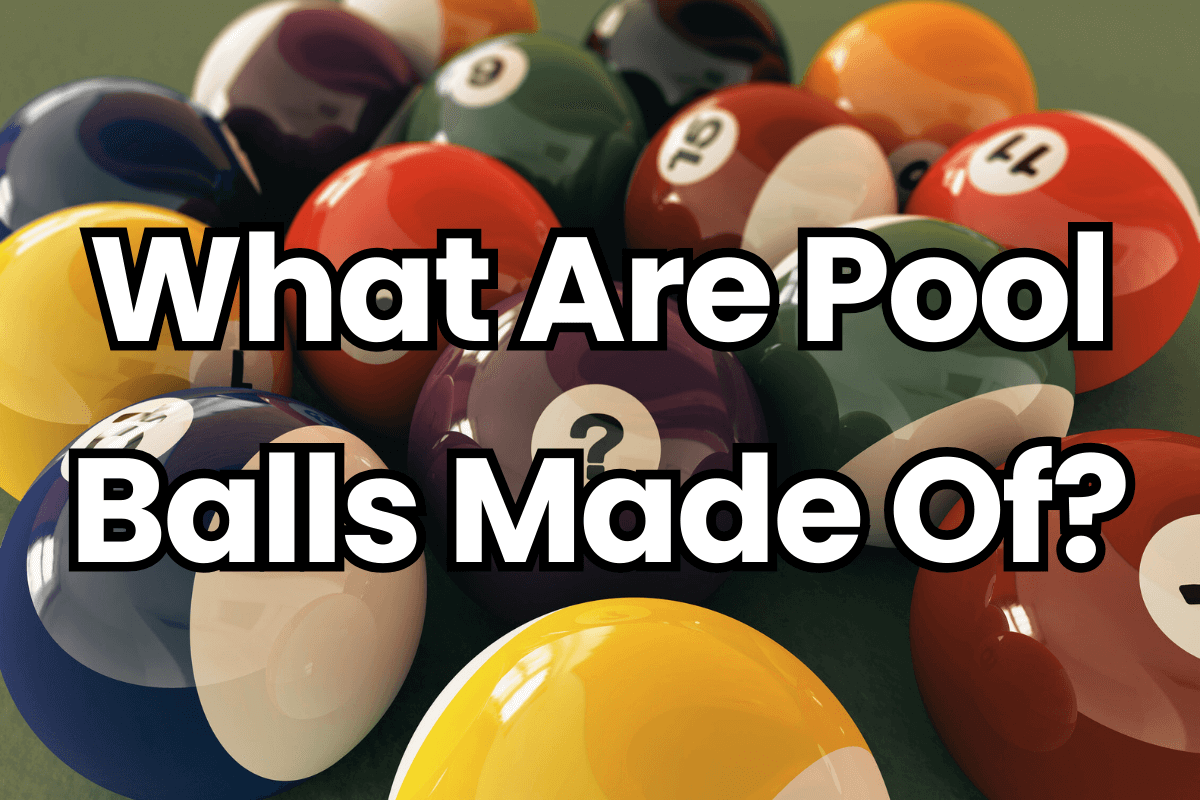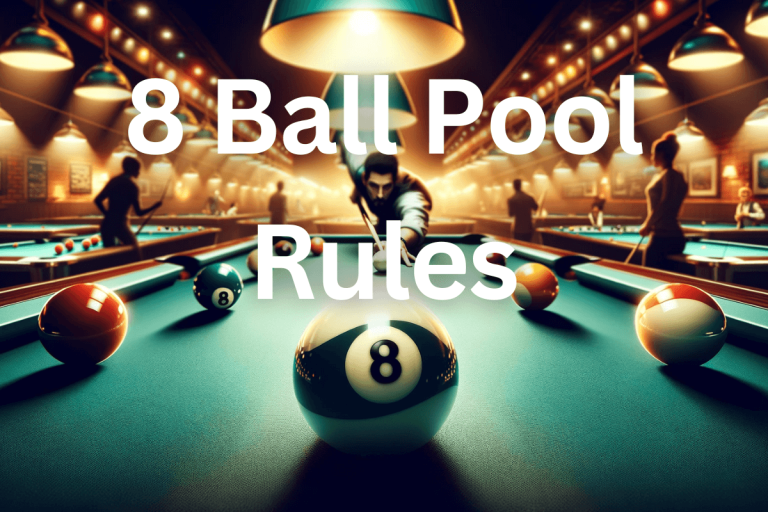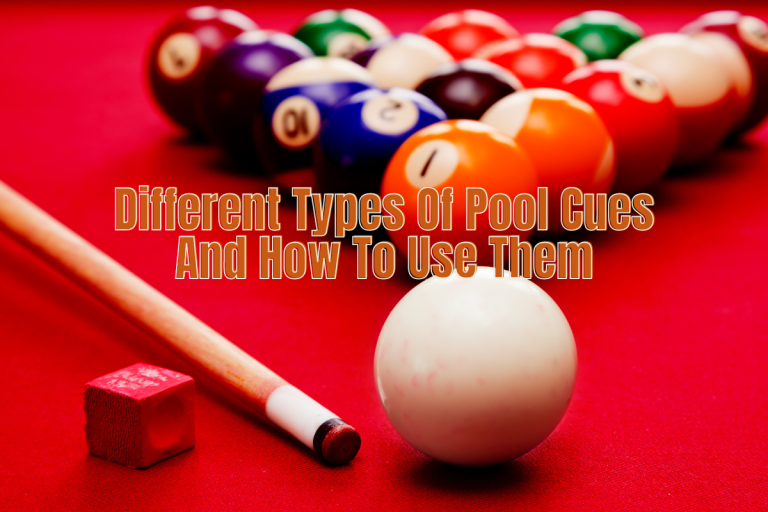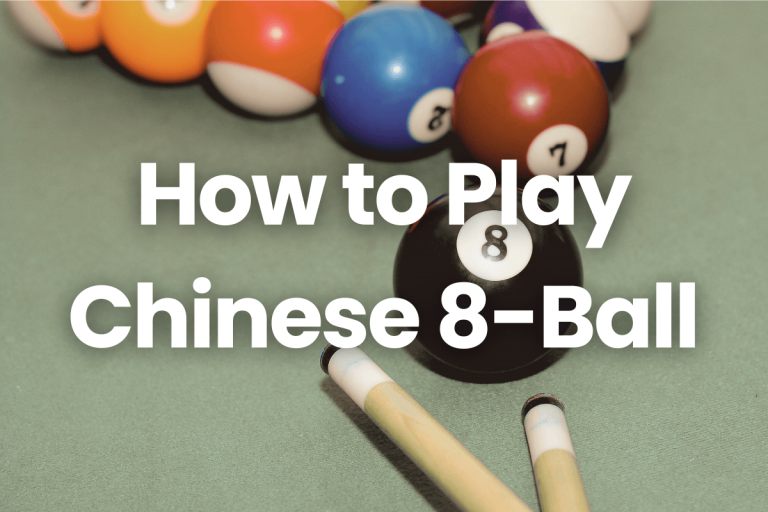What Are Pool Balls Made Of | Unlock the Secrets (2024)
The game of pool, with its rich history, has seen the evolution of pool balls from wood and clay to today’s sophisticated materials. The question of “What Are Pool Balls Made Of” is crucial, as the material directly impacts the game’s performance, affecting aspects like precision, durability, and overall playability. Modern pool balls predominantly utilize high-tech phenolic resin or polyester, marking a significant advancement from earlier materials. This shift underscores the ongoing quest for the perfect balance between tradition and technological innovation in enhancing the pool-playing experience.
What Are Pool Balls Made Of?
The Evolution of Pool Ball Materials
The evolution of pool ball materials reflects a journey of innovation driven by both necessity and ethical considerations. Initially, pool balls were crafted from easily accessible materials like wood and clay. However, these materials had significant limitations, including poor durability and inconsistent performance, which affected the game’s quality.
The quest for a better alternative led to the introduction of ivory balls in the mid-19th century. Ivory, derived from elephant tusks, was prized for its smooth texture and uniform density, providing a superior playing experience. However, the use of ivory raised serious ethical and sustainability concerns due to the decline in elephant populations and the cruel nature of ivory harvesting. This prompted the search for more humane and sustainable materials.
The transition to celluloid in the late 19th century marked the next significant advancement. Celluloid, an early type of plastic, offered a more ethical and sustainable alternative to ivory. However, it presented its own set of challenges. Celluloid was highly flammable and could degrade over time, leading to safety concerns and a shorter lifespan for the balls.
This phase in the evolution of pool ball materials highlights the industry’s efforts to balance performance with ethical and environmental responsibilities. Each transition not only aimed to improve the game but also reflected changing societal values towards sustainability and animal welfare.
Modern Pool Ball Materials
In the realm of modern pool ball manufacturing, the industry has settled on materials that offer an optimal blend of durability, playability, and precision, addressing the limitations of their historical counterparts. The most prominent of these materials is phenolic resin, which has become the standard for professional-grade pool balls.
Phenolic Resin: This material is celebrated for its exceptional durability and ability to withstand the rigors of frequent play. Phenolic resin balls are known for their consistent density and balance, ensuring accurate and predictable behavior on the pool table. Their impact resistance and low friction coefficient contribute to minimal wear and tear on both the balls and the pool tablecloth, making them a favorite in tournaments and high-use environments. The manufacturing process of phenolic resin balls involves curing under high pressure and temperature, resulting in a hardened, highly polished surface that maintains its gloss and smoothness over years of use.
Polyester and Acrylic: As cost-effective alternatives to phenolic resin, polyester, and acrylic pool balls offer good performance for casual players and venues where the game is played less frequently. These materials, while not matching the durability and precision of phenolic resin, still provide a satisfactory playing experience. Polyester balls, in particular, are noted for their vibrant colors and high gloss, making them visually appealing. Acrylic balls, though slightly softer than polyester, offer reasonable durability and playability for recreational use. Both materials are more affordable, making them accessible options for home tables and budget-conscious players.
Characteristics and Impact on Game Precision:
- Durability: Phenolic resin balls are almost impervious to chipping and cracking, ensuring a longer lifespan. Polyester and acrylic are less durable but adequate for lighter use.
- Playability: The uniform density and balance of phenolic resin balls contribute to precise and consistent play. Polyester and acrylic may exhibit slight variations in density and balance, affecting high-level precision.
- Game Precision: Phenolic resin’s superior balance and uniformity enhance the accuracy of shots, spins, and overall control, crucial for professional play. While polyester and acrylic balls may not offer the same level of precision, they still provide a pleasurable playing experience for recreational players.
The Science Behind the Materials
Understanding the science behind the materials used in pool balls offers fascinating insights into how these materials influence ball behavior, including aspects such as friction, spin, and collision impact. These factors are critical to the performance of the balls, affecting everything from the precision of shots to the overall playability of the game.
Material Composition and Ball Behavior
- Friction: The surface material of a pool ball plays a significant role in how it interacts with the pool table and other balls. Materials with a smoother finish, such as phenolic resin, reduce friction, allowing for smoother and more predictable movements across the table. This reduced friction is crucial for executing shots with precision and controlling the ball’s path.
- Spin: The ability of a ball to spin effectively is influenced by its surface hardness and texture. Harder materials like phenolic resin provide a more consistent response to spin techniques, as they deform less upon impact. This consistency is essential for players who rely on applying spin to control the game’s outcome.
- Collision Impact: The impact behavior of pool balls, including how they transfer energy during collisions, is heavily dependent on the material’s elasticity. Phenolic resin, known for its high elasticity, ensures efficient energy transfer between balls, leading to more dynamic and accurate play. This property is vital for achieving the desired ball spread on break shots and for precise targeting during the game.
Density and Balance
- Density: A uniform density across the ball ensures that it rolls straight and true, without bias. Variations in density can lead to unpredictable movements, undermining the player’s control over the game. High-quality materials like phenolic resin are engineered to maintain consistent density, enhancing the game’s fairness and predictability.
- Balance: The overall balance of a pool ball affects its trajectory and stability on the table. Imbalances, even slight ones, can lead to wobbles and deviations in intended paths. Advanced manufacturing processes have minimized these imperfections, ensuring that modern pool balls are as balanced as possible.
Manufacturing Process of Pool Balls
The manufacturing process of pool balls is a meticulous procedure that combines advanced material science with precision engineering. This process is designed to ensure that the balls meet high standards of performance, durability, and uniformity. Let’s delve into the step-by-step overview of how pool balls are made, followed by the quality control and testing procedures that underscore their high performance and longevity.
Step-by-Step Manufacturing Process
- Material Selection: The process begins with selecting the appropriate material, such as phenolic resin, polyester, or acrylic, based on the desired properties of the final product.
- Mixing and Blending: The raw materials are mixed and blended to create a uniform compound. For phenolic resin balls, this involves combining phenol with formaldehyde along with other additives to enhance the ball’s properties.
- Molding: The blended material is placed into molds under high pressure and temperature. This step is crucial for forming the spherical shape and ensuring the material’s density is uniform throughout the ball. The high pressure helps to eliminate air bubbles and potential weak spots.
- Curing: Once molded, the balls are subjected to a curing process where they are heated for a specific period. This process solidifies the resin, ensuring the balls are hard and durable.
- Cooling and Removing: After curing, the balls are cooled gradually to prevent any stress fractures. They are then removed from the molds.
- Machining and Polishing: The balls are then machined to achieve the precise diameter and roundness required. Following machining, they undergo a series of polishing steps to achieve a smooth, glossy finish. This is critical for reducing friction and ensuring consistent play on the pool table.
- Printing: The final step involves printing numbers and stripes on the balls, if applicable. This is done with durable inks to prevent wear over time.
Quality Control and Testing Procedures
To ensure high performance and durability, rigorous quality control and testing procedures are integral to the manufacturing process.
- Visual Inspection: Each ball is visually inspected for any surface imperfections, such as cracks, chips, or irregularities in the finish.
- Dimensional Accuracy: Balls are measured to ensure they meet the specified diameter and roundness tolerances. This ensures uniformity in size and shape across a set.
- Balance Testing: Balls are tested for balance to ensure they roll straight and true. Imbalanced balls can negatively affect gameplay.
- Density and Hardness Tests: These tests confirm that the balls have uniform density and the correct hardness level. Consistent density is crucial for predictable ball behavior, while hardness affects durability and impact resistance.
- Durability and Wear Tests: Balls undergo simulated wear testing to assess how they stand up to repeated impacts and abrasion. This ensures they maintain their shape, finish, and playability over time.
- Performance Testing: Finally, pool balls are tested in actual play conditions to evaluate their performance, including their rebound, spin, and collision characteristics. This helps in ensuring that they meet the expectations for professional and casual play alike.
Choosing the Right Pool Balls for You
Selecting the right pool balls can significantly enhance your playing experience, whether you’re engaging in casual play or competing in professional tournaments. The choice depends on various factors. Here’s a guide to help you make an informed decision:
Playing Needs
- Casual Play: If you’re playing pool for fun or leisure, polyester or acrylic balls might be sufficient. These balls are more affordable and provide a satisfactory playing experience for casual games. They’re also a good choice for families or individuals who enjoy the game but do not require professional-grade equipment.
- Professional Tournaments: For competitive play or tournaments, phenolic resin balls are the preferred choice. Their superior precision, consistency, and durability are essential for high-stakes games where every shot counts. Professional players and venues hosting tournaments should invest in these high-quality balls to ensure fair and consistent play.
Additional Considerations
- Budget: Consider your budget when choosing pool balls. While phenolic resin balls are more expensive, their longevity and performance can offer better value over time compared to cheaper alternatives.
- Maintenance: High-quality pool balls require less maintenance and are more resistant to chipping, fading, and wear. Consider the ease of cleaning and the long-term appearance of the balls when making your choice.
- Environmental and Ethical Considerations: Some players prefer materials that are sustainable and ethically sourced. Research the manufacturing processes of the pool balls to ensure they align with your values.
Conclusion
The choice of material in manufacturing pool balls significantly impacts their performance, durability, and ethical footprint. Understanding “What Are Pool Balls Made Of” guides players towards making informed decisions that affect gameplay quality and environmental sustainability. High-quality materials like phenolic resin offer superior playability and longevity, while also considering ethical practices in manufacturing. We encourage players to prioritize quality and ethical considerations in their purchases, ensuring a positive impact on both their game and the broader world.
FAQ
What is the official size and weight of a pool ball?
The official size of a pool ball is 2.25 inches in diameter, and the standard weight is about 5.5 to 6 ounces (156 to 170 grams). These dimensions can vary slightly depending on the specific game type (e.g., American pool vs. British pool) and the governing body’s regulations for tournaments.
Can the material of a pool ball affect my game?
Yes, the material of a pool ball can significantly affect your game. High-quality materials like phenolic resin provide consistent density, balance, and surface smoothness, leading to more predictable ball behavior, including accurate spins and trajectories. In contrast, balls made from lower-quality materials may not offer the same level of performance, potentially affecting shot precision and overall gameplay.







